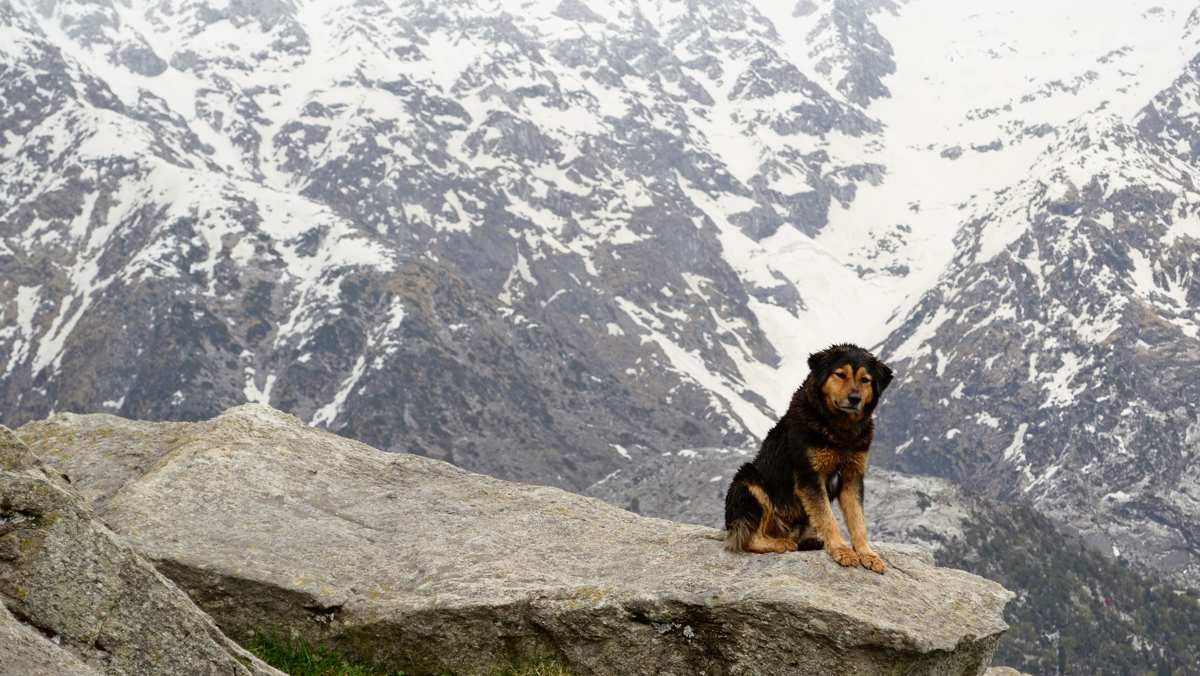Himalayan Sheepdog Breed Details
Below are the details and specs for the Himalayan Sheepdog breed.

Himalayan Sheepdogs have long been flock protectors as well as loyal family guardians for the people of the Himalayan region. They do best on a large property with plenty of room to patrol or as a companion for a farmer. These are not indoor dogs and require a lot of exercise. They are suspicious towards strangers and are capable protectors if need be. Ideally, they will reside in a single pet household or be kept separately from other pets, as they can be territorial towards other dogs. If kept outdoors, they will require little grooming and will be independent; this can make them stubborn in regards to training so a firm, stern dominant-type personality is necessary to accomplish this. Himalayans are quite healthy and should live around 10 years with little health concerns other than joint issues.
Below are the details and specs for the Himalayan Sheepdog breed.
Himalayans are considered medium sized, with males at 21-24 inches at the shoulder and 60-70 pounds; females are 19-22 inches and weigh around 50-60 pounds.
If trained early the Himalayan will be gentle, loyal companions to their families. They should be an only pet unless kept separately. Members of this breed will be suspicious toward strangers and are good guard dogs.
This breed is very low maintenance if kept outside but will require more grooming, and hours of exercise, is kept inside. Training requires a stern, firm owner that can immediately establish themselves as the dominant party.
Members of this breed have long been guardians of cattle and flocks of sheep, as well as property. They can be found all along the Himalayan region in the area from eastern Nepal to western India, but there is a rare type that is golden in color found only in the Kumaon region of the range. Although appearing as a longhaired version of a Labrador, the Himalayan Sheepdog is much more closely related to the Tibetan Mastiff. Today they are still primarily found in their area of origin doing the same tasks. Many families keep this breed as a companion.
This breed is said to resemble a Labrador in appearance but with thicker body and longer hair. They have small, drooping ears and reddish-brown eyes that are deep, close-set,and slightly slanting. The coat is double layered with an immensely thick undercoat and a long, harsh outer coat; this is shorter on the legs but longer and feathered on the rear. They are, overall, firm and muscular dogs, not long and leggy, and with cat-like, compacted feet to canvas the mountainous terrain.
The images below represent the coat colors and patterns associated with Himalayan Sheepdogs.




If living in the wild or doing work as a herding or guarding dog, Himalayans are said to be ferocious and aggressive (still less so than other Indian breeds). With their families they are quite the opposite; gentle, loyal and companionable. They have long been bred to guard flocks of sheep, properties and homes and do not do well spending most of the day indoors.
These dogs are rumored to be stubborn and independent and will require firm, stern training to show them you are the dominant pack leader.
This breed is extremely low maintenance if kept it its natural environment outdoors. Indoors they will high maintenance due their need for a couple hours outdoor exercise coupled with frequent brushings and bathing. Training is also not a breeze, as this breed is said to be stubborn, independent, and unhappy with repetitive activities.
These dogs are fairly rugged and only require as much grooming as is necessary to allow them into your house. If you don't want to clean up shed when they come indoors, brushing them a couple times a week will help this; when it gets warm they will blow their ultra-dense undercoat. Bathe, clean ears and teeth, and trim nails as necessary.
Members of this breed need quite a bit of exercise daily and, thus, do not do well spending all day in the home. If left to their own devices on large expanses of land they will get their own exercise. They enjoy having a job to do such as guarding the home or herding. If you insist on having one indoors, you should give them at least an hour or two of daily outdoor exercise.
Himalayans are accustomed to living outdoors and are not recommended indoors. They will be guardians of your property and if you do not have a large one for them to freely roam, a fenced yard is a must. They may wander off to explore or scavenge.
This breed is healthy, overall, and will typically live around 10 years. Some common health issues for them include joint problems such as: hip and elbow dysplasia, patellar luxation and arthritis. Glaucoma is not uncommon either. Obesity and bloat are always concerns to those that let their dog eat unchecked. Note that dogs bred in India are prone to having ticks, worms or even mange so puppies should be checked thoroughly by a veterinarian.
Below are potential health concerns associated with Himalayan Sheepdogs.